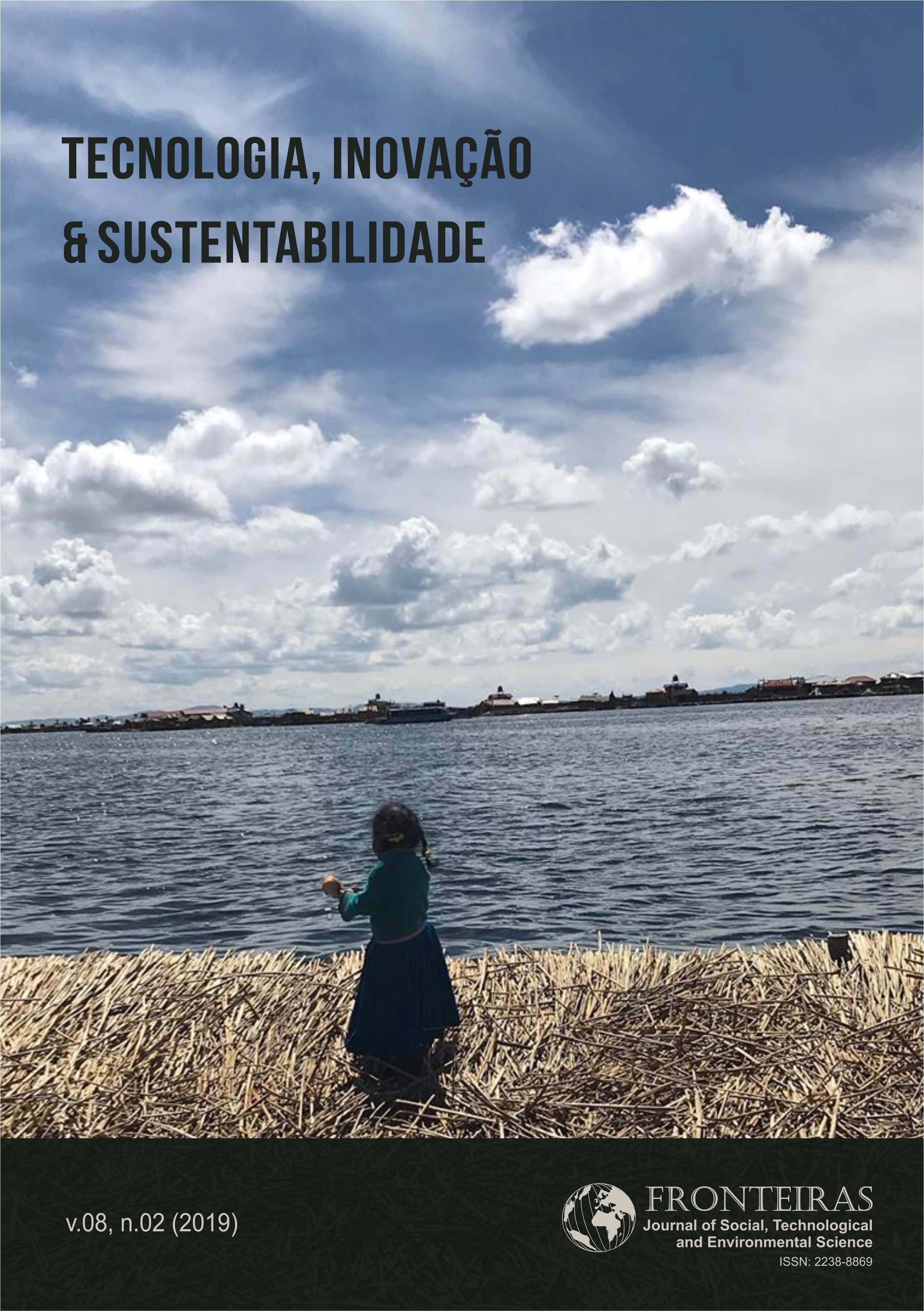Reuse of Treated Wastewater in Metal-Mechanics Industry: A Technical-Economic Evaluation
DOI:
https://doi.org/10.21664/2238-8869.2019v8i2.p147-163Palabras clave:
Environmental Economics, Industrial Effluents, Wastewater Treatment, Pollution ControlResumen
Metal-mechanical industries are intensive in the consumption of water and, consequently, in the wastewaters production. Thus, reuse is essential because it preserves the environmental resources, diminishing the water footprint of the obtained products. Despite the advanced techniques, the economic cost limits the wastewater treatment to the most common techniques. This study evaluated the technical potential and costs involved in the reuse of wastewater in a metal-mechanical industry. Mistakes were found in the reagents dosage, what precluded reuse of the treated wastewater. The optimum condition for coagulation/flocculation was evaluated using the bench scale jar test. The parameters of wastewater, such as turbidity, pH, alkalinity, hardness, electrical conductivity, chloride and total solids were evaluated. The ideal condition was tested at the plant and some adjustments were made. The improvements resulted in 50.96% cost reduction of wastewater treatment without new investments. Also, the treatment became faster and more efficient. The wastewater achieved the standards for reuse in toilet flushing and floor washing.
Citas
CONAMA (Conselho Nacional do Meio Ambiente) 2005. Resolução CONAMA nº 357 de 18 de março de 2005. Diário Oficial da União 53:58-63.
CONAMA (Conselho Nacional do Meio Ambiente) 2011. Resolução CONAMA nº 430 de 13 de maio de 2011. Diário Oficial da União, 8 pp.
Hägg K. Calcium chloride as a co-coagulant [monograph on the Internet]. Sweden: KTH Royal Institute of Technology; 2015 [cited 2018 Mar 17]. Available from: http://www.diva-portal.org/smash/get/diva2:839318/FULLTEXT01.pdf.
Insel G, Gumuslu E, Yuksek G, Ucar NS, Cokgor EU, Olmez-Hanci T, Tas DO, Babuna FG, Ertem DF, Yildirim O, Erturan O, Kirci B 2017. Evaluation of water reuse in a metal finishing industry. Fresenius Environ Bull, 26:5-421.
Kuritza JC 2012. Aplicação da coagulação, floculação e sedimentação como pós-tratamento de efluente de uma indústria de papel e celulose. Universidade Estadual do Centro-Oeste, 109 pp.
Metcalf & Eddy Inc 2003. Wastewater engineering: treatment and reuse. 4th ed., McGraw-Hill, New York, 1819 pp.
Parron LM, Muniz DHF, Pereira CM 2011. Manual de procedimentos de amostragem e análise físico-química de água. Embrapa, Colombo, 67 pp.
Queissada DD, Silva FT, Paiva TCB 2011. Tratamentos integrados em efluente metal-mecânico: precipitação química e biotratamento em reator do tipo air-lift. Engenharia Sanitária e Ambiental, 16(2):8-181.
Rice EW, Baird RB, Eaton AD, Clesceri LS (eds.) 2012. Standard methods for the examination of water and wastewater. American Public Health Association, American Water Works Association, Water Environment Federation, 541 pp.
Rout D, Verma R, Agarwal SK 1999. Polyelectrolyte treatment: an approach for water quality improvement. Water Sci Technol, 40(2):41-137.
Silva DOZ, Mortari SR, Dressler VL, Salazar RFS, Santiago MR, Buriol GA 2014. Pré-tratamento de efluente metal mecânico por processos químicos: estudo de caso. Discip Sci, 15(1):17-27.
Teh CY, Budiman PM, Shak KPY, Wu TY 2016. Recent advancement of coagulation-flocculation and its application in wastewater treatment. Ind Eng Chem Res, 55(16):89-4363.
USEPA (United States Environmental Protection Agency) 2012. Guidelines for water reuse. Washington, United States Environmental Protection Agency, 618 pp.
WEF (Water Environment Federation) 2008. Industrial wastewater management, treatment, and disposal, 3rd ed., Water Environment Federation, Alexandria, USA, 568 pp.
Zenebon O, Pascuet NS, Tiglea P 2008. Métodos físico-químicos para análise de alimentos, Instituto Adolf Lutz, São Paulo, 589-625.
Descargas
Publicado
Cómo citar
Número
Sección
Licencia
Esta revista oferece acesso livre imediato ao seu conteúdo, seguindo o princípio de que disponibilizar gratuitamente o conhecimento científico ao público proporciona maior democratização mundial do conhecimento.
A partir da publicação realizada na revista os autores possuem copyright e direitos de publicação de seus artigos sem restrições.
A Revista Fronteiras: Journal of Social, Technological and Environmental Science segue os preceitos legais da licença Creative Commons - Atribuição-NãoComercial 4.0 Internacional. 

